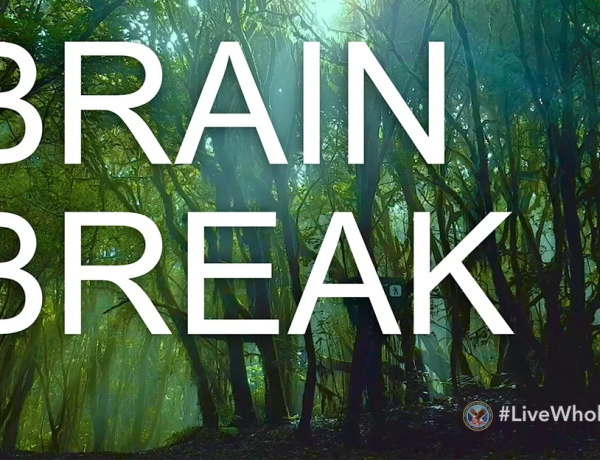Pace Yourself
Pace yourself” means to proceed at a steady, manageable speed or rate, allowing for sustained effort and preventing burnout or exhaustion.
Here’s a more detailed explanation:
Be kind to yourself: Don’t be too hard on yourself if you fall behind.
Definition:To pace yourself means to do something at a speed that is steady and allows you to continue without becoming too tired.
Why it’s important:Pacing yourself is crucial for various activities, including physical tasks like running or exercising, work projects, and even managing daily life.
Benefits of pacing:
Reduced fatigue: By not overexerting yourself, you can maintain energy levels for longer periods.
Improved performance: A steady pace can lead to better results and prevent mistakes caused by rushing.
Increased efficiency: You can accomplish more by working at a consistent pace rather than starting and stopping frequently.
Better mental health: Pacing yourself can help reduce stress and anxiety by preventing overwhelm.
Examples of pacing:
In running: Runners pace themselves to conserve energy and maintain a consistent speed throughout the race.
In work: You can pace yourself by breaking down large tasks into smaller, more manageable chunks and setting realistic deadlines.
In daily life: You can pace yourself by taking breaks, prioritizing tasks, and avoiding overcommitment.
Tips for pacing:
Plan ahead: Create a schedule or plan to help you stay on track.
Set realistic goals: Don’t try to do too much at once.
Take breaks: Allow yourself time to rest and recharge.
Prioritize tasks: Focus on the most important tasks first.
Video Source Painguide – Pacing Module
Search: Pacing to Reduce Autistic Burnout
To reduce autistic burnout, pacing involves strategically managing energy levels by balancing high-energy activities with rest and restorative activities, and by recognizing and addressing the unique needs of autistic individuals.
Here’s a more detailed breakdown of pacing strategies for autistic burnout:
Understanding Autistic Burnout:
- Distinct from General Burnout:Autistic burnout is often linked to the challenges of navigating a world designed for neurotypical individuals, including the effects of masking and social demands.
- Recognizing Symptoms:Autistic burnout can manifest as extreme exhaustion, difficulty with social interactions, heightened sensory sensitivities, and a decline in skills like communication and self-regulation.
- Internalized Ableism:It’s important to address internalized ableism, which can lead to pushing boundaries and overextending oneself.
Pacing Strategies:
- Energy Inventory: Track your energy levels and identify activities that drain or energize you.
- Create a Schedule: Balance high-energy tasks with rest and restorative activities.
- Pacing Systems:
- Traffic Light System: Categorize activities as low, medium, or high energy.
- Spoon Theory: Visualize your energy as “spoons” and allocate them to different activities.
- Energy Switching: Break down activities into different categories (physical, mental, rest) to prevent boom-and-bust cycles.
- Pomodoro Technique: Work in focused intervals followed by short breaks.
- Prioritize Rest: Incorporate restorative activities like relaxation exercises, deep breathing, or spending time in nature.
- Sensory Supports: Create a sensory-friendly environment and use sensory tools to regulate sensory input.
- Self-Care: Engage in activities that recharge your energy and promote well-being.
- Set Boundaries: Learn to say no and protect your energy reserves.
- Seek Support: Talk to therapists, counselors, or support groups for guidance and strategies.
- Address Internalized Ableism: Challenge beliefs about what you “should” be able to do and honor your needs.
- Unmasking: Allow yourself to be authentically autistic and reduce the need for masking, which can be a significant source of stress.
- Special Interests: Engage in activities that you find enjoyable and fulfilling, as they can be a source of energy and motivation.
- Time Off: Take breaks and time off when needed to avoid burnout.
- Reduce Demands: Simplify your daily routine and reduce unnecessary demands.
- Build a Support Network: Connect with understanding family members, friends, and colleagues.
- Seek Professional Help: Talk to therapists, counselors, or occupational therapists experienced in autism for personalized support.
- Spoon Theory For Autism and ADHD – Neurodivergent InsightsIntro to Pacing Systems … I also find that pacing systems are a helpful tool for breaking the boom-or-bust cycle. Pacing systems…
Neurodivergent Insights
- Autistic Burnout: Identification, Causes, and Recovery | Sunfield Center24 Mar 2023 — Often the result of prolonged stress, burnout is a state of total exhaustion (Smith et al., 2021). People experiencing …
Sunfield Center
- Navigating time and energy as an Autistic and chronically ill person5 Apr 2023 — I also found that, if I stopped an activity to rest, I would struggle starting another one later. One of the ways I navi…
Tiimo
- Show all
This is for informational purposes only. For medical advice or diagnosis, consult a professional. Generative AI is experimental.
Search: Pacing and ME/CFS
Pacing, a self-management strategy for Myalgic Encephalomyelitis/Chronic Fatigue Syndrome (ME/CFS), involves regulating activity to avoid post-exertional malaise (PEM) and maintain a sustainable level of function. It’s about balancing activity and rest to minimize symptom flare-ups and improve quality of life, rather than pushing through fatigue.
Pacing is a strategy to manage energy levels and avoid overexertion, which can lead to PEM, a hallmark symptom of ME/CFS where symptoms worsen after physical, mental, or emotional effort.
